Uganda
Things to Do
Entebbe
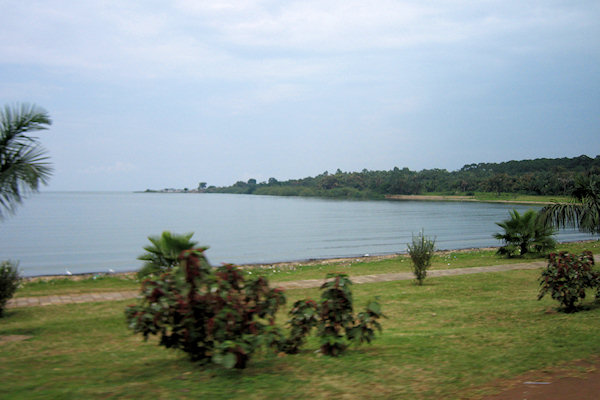 |
|||||
Entebbe is 38km south of Kampala. Located on the shores of Lake Victoria it is home to the
international airport of Uganda. Entebbe is a quiet town inhabeted by a mix of cultures.
It has many hotels and resturants, being on of the most popular weekend gateway locations
for those who work in Kampala searching for a break form the daily smog and traffic of downtown.
It is a remarkably unfocused urban centre, carved haphazzardly into the tropical lakeshore jungle
in such a manner that one might reasonably wonder whether most of its 50.000-plus residents haven't
packed up their tents and gone on holiday. Indeed. Entebbe is quite possibly the only African
capital past or present with a golf course more expansive than its nominal city centre, or
whose tallest buildings are dwarfed by the antiquated trees of the botanical garden.
Botanical Garden
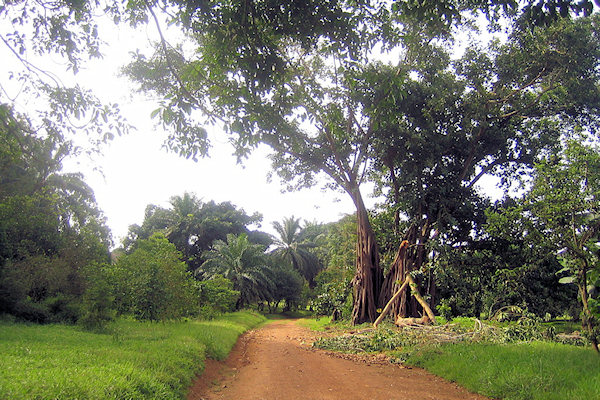 |
|||||
Established in 1902, Entebbe´s Botanical Garden is an attractively laid-out mix of
indigenous forest, cultivation and horticulture, and a highly attractive destination to
birdwatchers.
The botanical garden offers an excellent introduction to Uganda's birds, ranging from shorebirds,
such as - Hadada Ibis, Hamerkop - to the impressive Palmnut Vulture and
Fish Eagle. Forest birds include the splended Great Blue Turaco, as well as the
noisy Black-and-White Casqued Hornbill are also present.
There are some mammals around, like the Black-and-White Colobus Monkey and lots of
butterflies
It is said that some of the early Tarzan films were shot on location in Entebbe - a thus-
far unverifiable legend that gains some plausibility when you compare the giggling of the
Plantain-Eaters that frequent the botanical garden with the chimp noises that punctuate
the old movies.
Ngamba Isand Chimpanzee Sanctuary
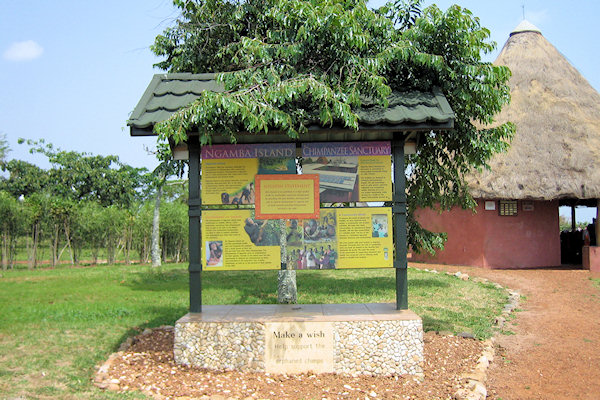 |
|||||
Situated 23km southeast of Entebbe, the 50ha Ngamba Island forms part of the Kome archipelago,
a group of about 15 islands. Ngamba was established as a chimpanzee sanctuary in 1998, when 19
orphaned chimps were relocated there from the Uganda Wildlife Education Centre (UWEC) in
Entebbe. These chimps had all been saved from a life in captivity or a laboratory when they were
confiscated by the Ugandan authorities.
The island is divided into two unequal parts, seperated by an electric fence. On one side of the
fence, the visitors and staff centre extends over about 1ha on a partially cleared strech of
northwestern shore notable fot the immense weaver colonies it supports. The rest of the island is
reserved more-or-less exclusively for the chimps and their attendants.
Ngamba was chosen as a sanctuary because is was formerly uninhabited and its rainforest environment
is almost identical to that of wild chimpanzees, with more than 50 plant species known to be
utilised by free-ranging chimps in Uganda represented.
There is plenty of room for the chimps to roam, but the forest isn't large enough to sustain the
entire community - so the chimps are fed a porridge-like mixture for breakfast, and then fruits
and vegetables twice during the day. The fruits are fed to the chimps from a viewing platform,
which provides an opportunity for visitors to observe and photograph the chimps. the chimps have
the choice of staying in the forest overnight or returning to a holding facility built to enhance
social integration and veterinary management, with sleeping platforms and hammocks as well as
grass for nest building.
Since 1998, UWEC, has received an influx of orphaned chimpanzees, most of which were captured
illegally in the forest of the Democratic Republic of the Congo and smuggled across Uganda
for trade. By July 2008, 45 orphaned chimpanzees were resident on Ngamba Island. Workers on the
island are constantly involved in helping the newly arrived orphans to integrate into the original
community, which spans an age range of two to 19 years old, with an almost equal balance of males
and females. In order to house the ceaseless influx of new orphans, a new sanctuary is currently
being constructed on the adjacent Nsadzi Island, which covers about ten times the area of
Ngamba.
Kampala
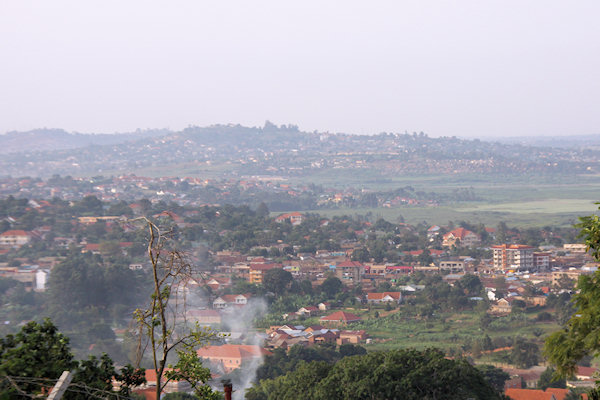 |
|||||
The capital city and economic and social hub of Uganda, Kampala is also the country's largest
urban center by a factor of ten , with a population of about 1.5 million. Kampale, like Rome,
was originally built across seven hills - today, that figure is more like two dozen - and although
its founder is generally cited as Capitain Lugard, who set up camp on Kampala Hill in 1890,
the surrounding hills had in fact lain at the political centre of Buganda for several
decades before that.
Kampala is the archetypal African capital - more verdant than many of its counterparts, not quite
so populous or chaotic as others - but essentially the familiar juxtaposition of a bustling compact
high-rise city centre rising from a leafly suburban sprawl, increasingly organic in appearance as
one reaches its rustic periphery.
The name Kampala derives from the Luganda expression Kosozi Kampala - Hill of Antelope -
a reference to the domestic impala that cropped the lawns of Mengo during Mutesa's reign (1882-1884)
Mbale
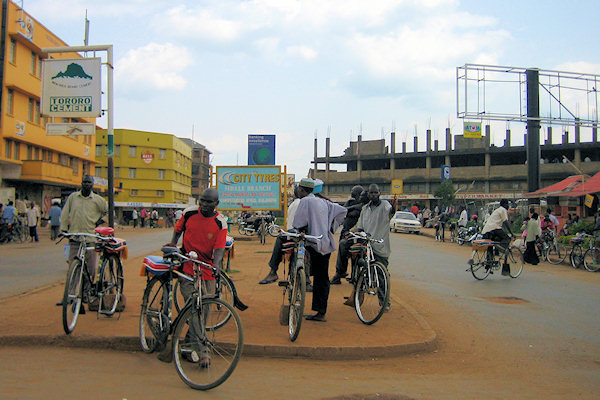 |
|||||
Mbale is the third-largest town in Uganda, with a population estimated at 75.000. Nestled at
an altitude of around 1.200m in the Mount Elgon foothills. On a clear day, the volcanic peaks of
the 4.321m Mount Elgon are visible from the town centre.
Relatively few travellers pass through Mbale, and those who do are generally en route to
Mount Elgon or the Sippi Falls. There is no overwhelming reason tpo stopover in town for longer
than is required to change public transport, but if you do, you'll find the range of tourist
facilities is among the best in Uganda.
Sipi Falls
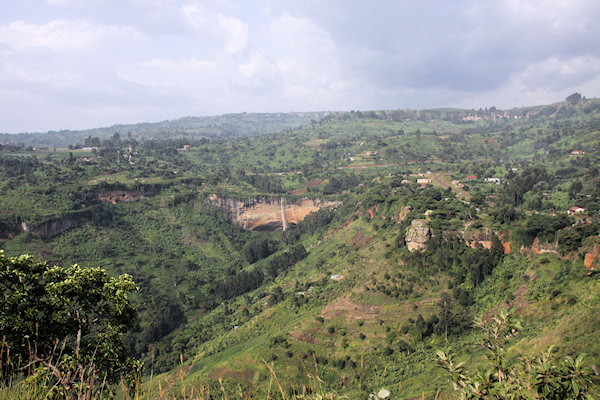 |
|||||
The Sipi river rises on the upper slopes of Mount Elgon before cascading down the foothills over
7km to form a series of four pretty waterfalls culminating in a 99m drop at an altitude of 1.750m
outside the small trading centre of Sippi, 60km from Mbale by road.
Overlooking the main waterfall is a choise of resorts and campsites that cater to all budgets and
make an agreeable base for gentle day walks in the surrounding hills, with their spectacular views
over the Kyoga Basin and glimpses of the nearby Elgon peaks.
It is possible to undertake a day hike from the main waterfall to the three smaller falls that lie
upstream, one of which has a tempting swimming pool at its base.
Jinja
Bujagali Falls
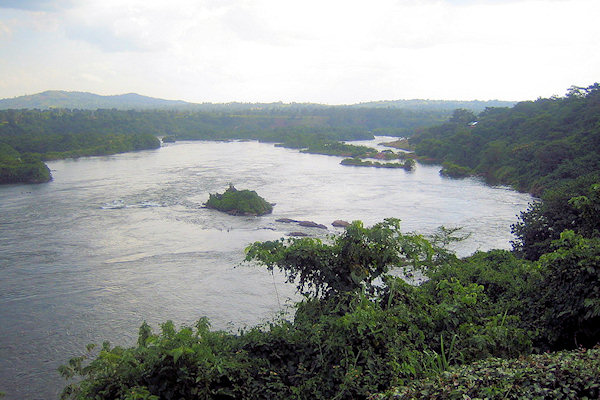 |
|||||
Located some 8kms out of Jinja this is a spectacular scenic spot with 1 km of raging rapids,
forested islands in the Nile and an abundance of bird life.
These are the little-known but stunningly beautiful Bujagali Falls.
Although lacking a single massive drop of the kind that generally earns waterfalls their fame,
the Bujagali are distinctive because of the sheer volume of water cascading over the series of low
rapids that would otherwise be unremarkable.
The luxuriant vegetation covering the river banks and islands, and the startling diversity of bird
life attracted by the multitude of fish, complete the stunning vista:
As illustrated in the photographs.
Rafting
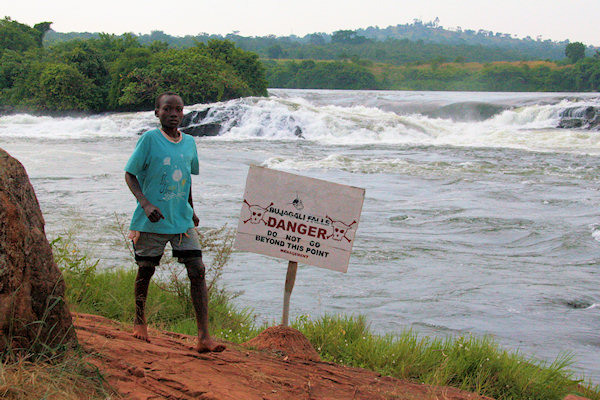 |
|||||
The eastern bank off the Nile, between Jinja and Bujagali has developed into East Africa's
premier adventure tourism centre, seviced four bustling backpacker facilities and an upmarket
tented camp and hotel.
This is because the 50km strech of the Nile north of Jinja is now a legendary white-water rafting
and kayaking route, widely regarded to be as exhilarating as the more famous Zambezi Gorge
below Victoria falls.
Additional activities include bungee jumping, an aerial runway and quad biking.